power automate
How to Run JavaScript in Power Automate


Introduction
Running inline JavaScript can be a powerful way to extend your workflows. This guide will walk you through the steps to set this up in Power Automate via a custom connector for an Azure Function.
Step 1: Create an Azure Function
- Log in to the Azure Portal: Go to Azure Portal.
- Create a new Function App: Navigate to “Create a resource” > “Compute” > “Function App”.
- Configure your Function App:
- Subscription: Choose your subscription.
- Resource Group: Create a new resource group or select an existing one.
- Function App name: Enter a unique name.
- Runtime stack: Select “Node.js”.
- Region: Choose a region close to you.
- Review and create: Review your settings and click “Create”.
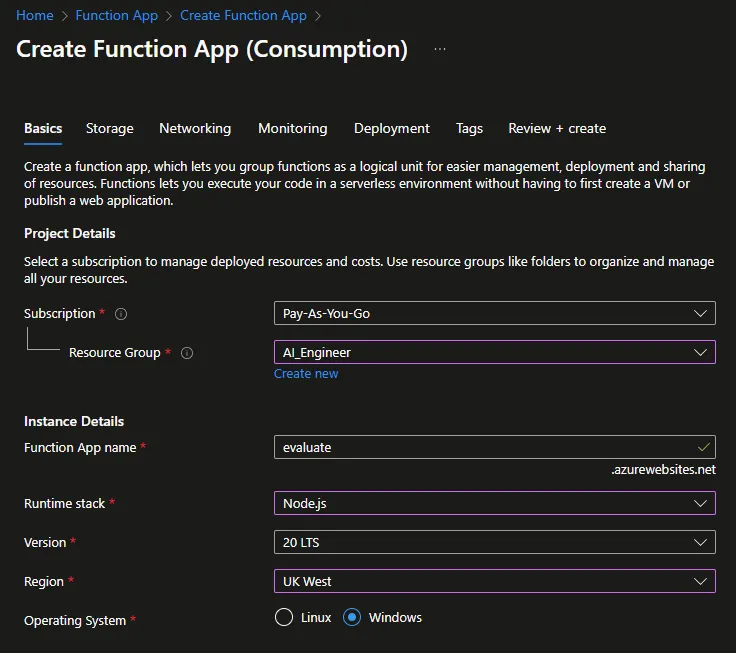
Step 2: Develop the Azure Function
- Navigate to your Function App: Once created, go to your Function App.
- Create a new function: Click on “Functions” > “Add” > “HTTP trigger”.
- Configure the function:
- Name: Give your function a name.
- Authorization level: Choose “Function”.
- Write your JavaScript code: Replace the default code with this:
module.exports = async function (context, req) {
context.res = {
body: {},
headers: {
"content-type": "application/json"
}
};
if (!req.body || typeof req.body !== "string") {
context.res.status = 400;
context.res.body = { error: "Invalid input" };
return;
}
try {
const result = new Function(req.body)();
context.res.body = { result };
} catch (e) {
context.res.status = 400;
context.res.body = { error: e.message };
}
};- Save and test: Save your function and test it using the “Test/Run” feature.
Step 3: Create a Custom Connector in Power Automate
- Log in to Power Automate: Go to Power Automate.
- Create a new custom connector:
- Navigate to “Data” > “Custom connectors” > “New custom connector” > “Create from blank”.
- Configure the custom connector:
- General: Enter a name and description.
- Scheme: HTTPS
- Host: Enter the base URL of your API Management instance.
- Security: API key
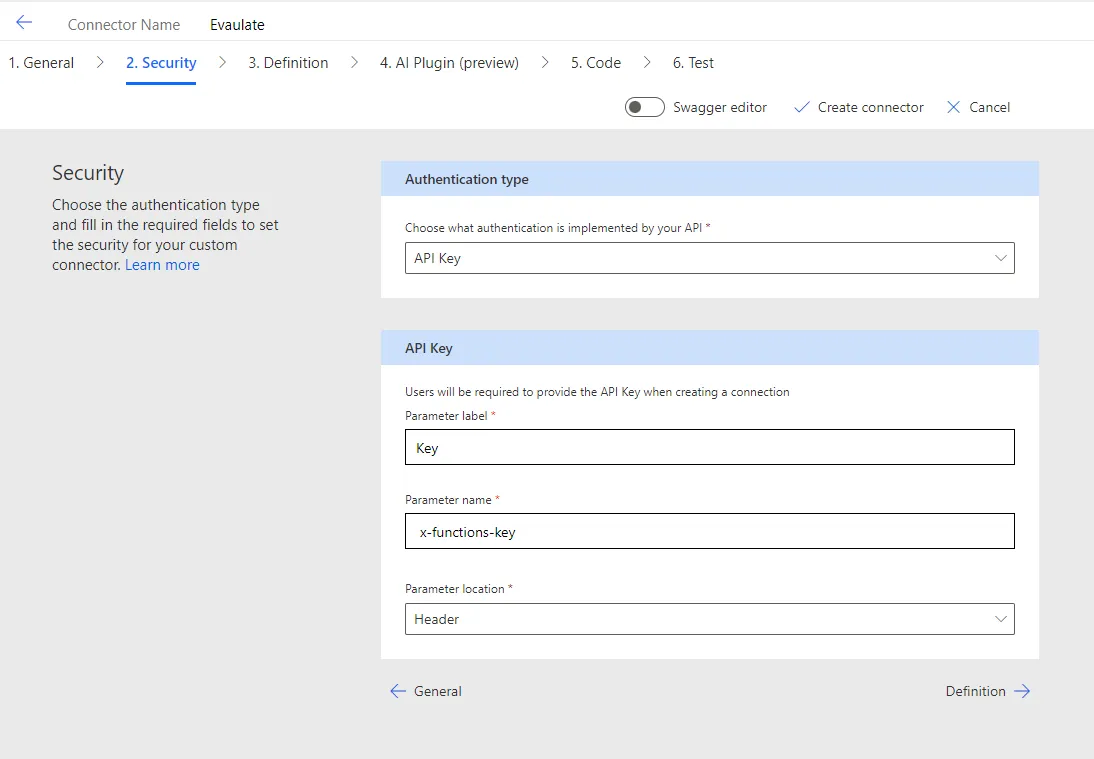
-
Definition: New Action
- Summary: Evaluate
- Description: Evaluates inline JavaScript passed as a string to the request body
- Visibility: important
-
Request: Import from sample
- Verb: POST
- URL: Your function URL
- Import

- Response: default > Import from sample
- Body:
{ "result": null }
- Body:
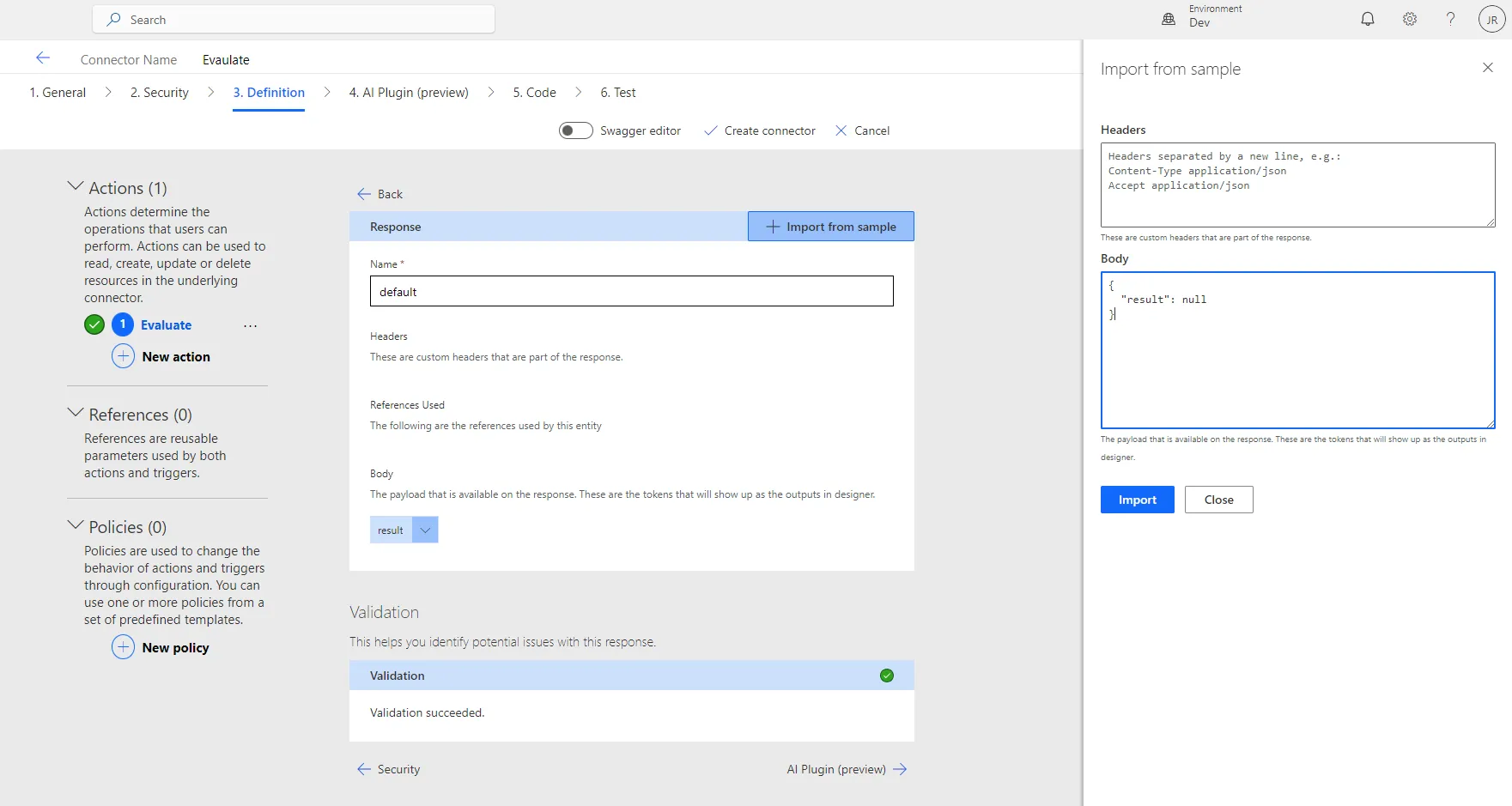
- Swagger editor: paste the following into the parameters section of the /Evaluate path:
parameters:
- name: script
in: body
required: true
schema:
type: string- The completed swagger should look as follows:
swagger: "2.0"
info:
title: Evaulate
description: Connects to an Azure Function
version: "1.0"
host: <your base url>
basePath: /api
schemes:
- https
consumes: []
produces: []
paths:
/Evaulate:
post:
responses:
default:
description: default
schema:
type: object
properties:
result:
type: string
description: result
title: result
summary: Evaluate
description: Evaluates inline JavaScript passed as a string to the request body
operationId: Evaluate
x-ms-visibility: important
parameters:
- name: script
in: body
required: true
schema:
type: string
definitions: {}
parameters: {}
responses: {}
securityDefinitions:
Key:
type: apiKey
in: header
name: x-functions-key
security:
- Key: []
tags: []- Create Connector
- Create a Connection: Add New Connection > Key > Create
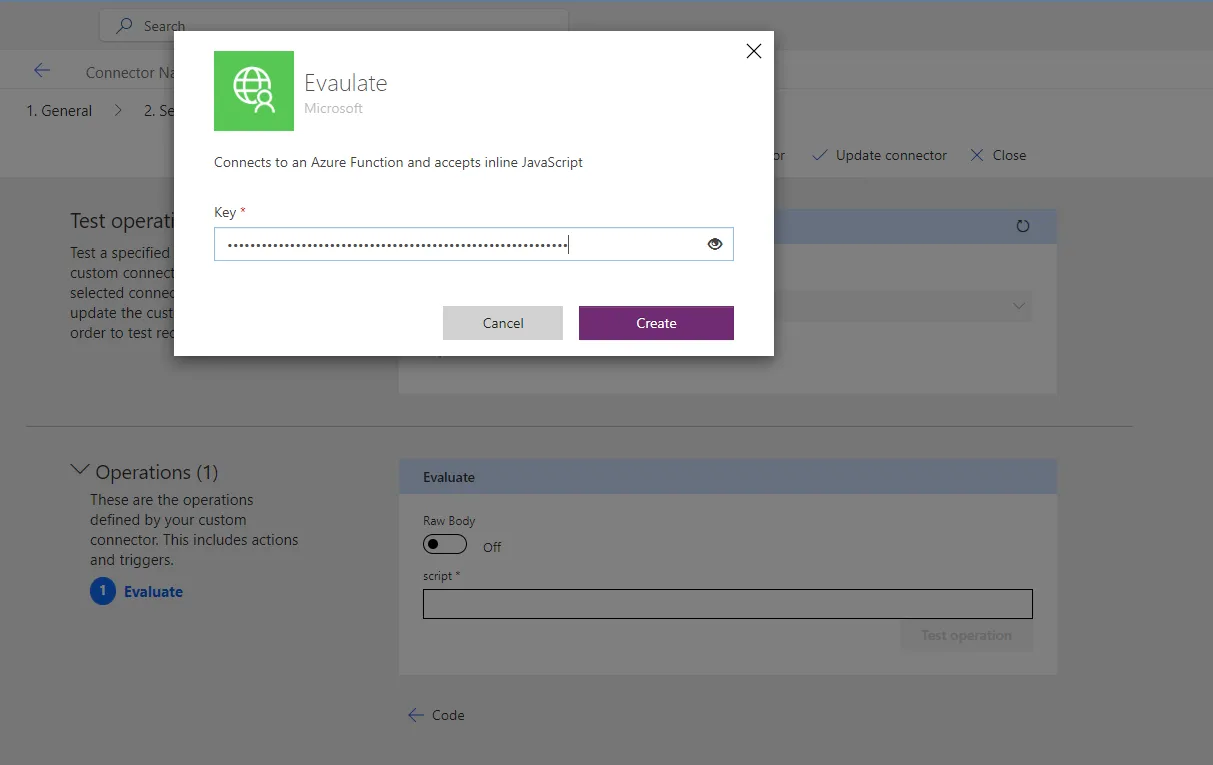
- Test the connector: script >
return 2+ 2> Test operation
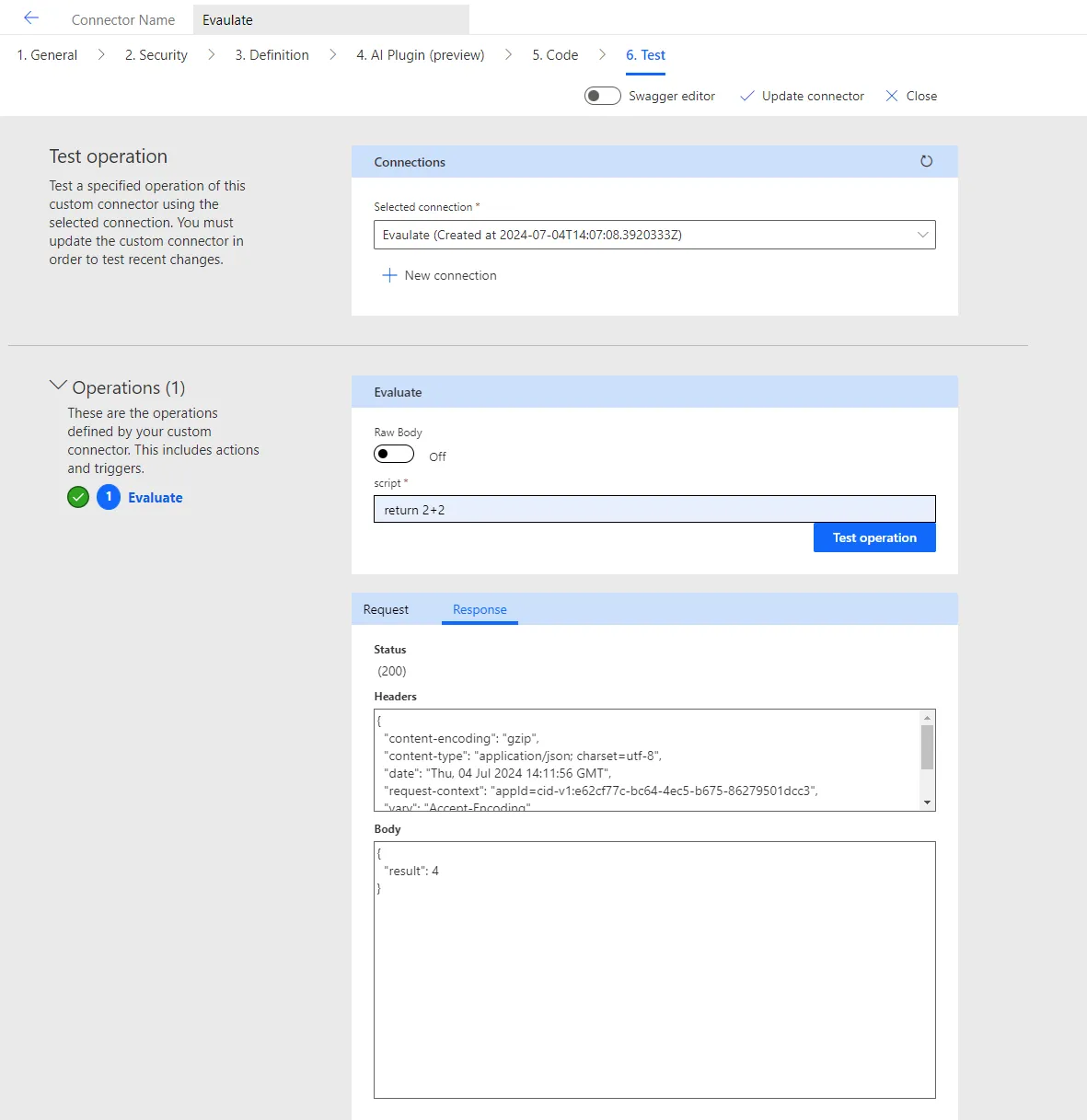
Step 4: Use the Custom Connector in a Flow
- Create a new flow: Go to “My flows” > “New flow”.
- Add a trigger: Choose a trigger to start your flow.
- Add an action: Search for your custom connector and add the action you defined.
- Configure the action: Enter any required parameters.
- Save and test the flow: Save your flow and test it to ensure it runs correctly.
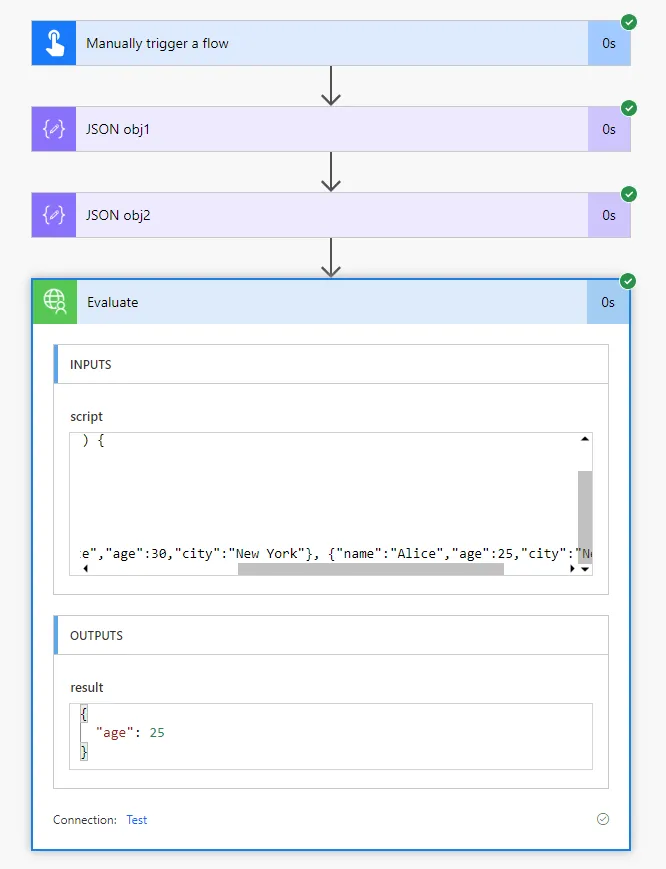
By following these steps, you can run JavaScript via a custom connector for an Azure Function in Power Automate, enabling you to create powerful and flexible workflows.